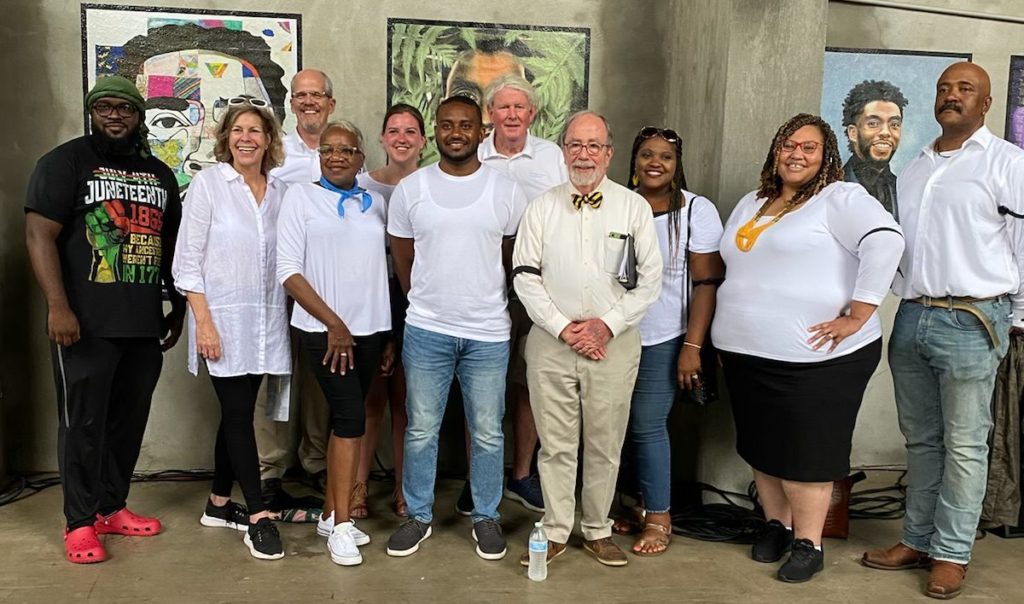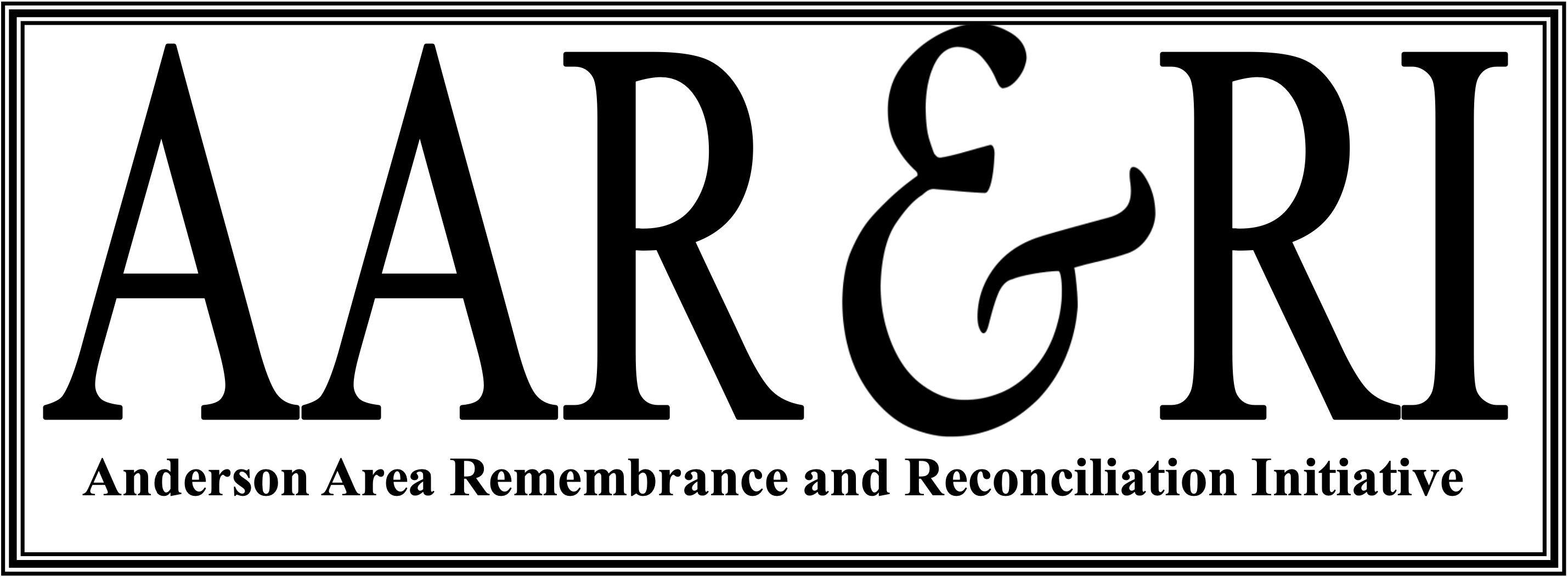Mission
Anderson Area Remembrance and Reconciliation Initiative (AAR&RI) is a movement of concerned individuals in Anderson County with two primary purposes. One is to honor the memory of five documented victims of racial lynching in Anderson County in the period between 1894 and 1911 by participating in the Community Remembrance Project of the Equal Justice Initiative. The other is through dialogue, education, and fellowship to move our community toward reconciliation and elimination of racial disparities and the realization of “Beloved Community” as described by The Rev. Dr. Martin Luther King.

History
In the summer of 2020, a group of six people in Anderson formed a steering committee and launched the Anderson Area Remembrance and Reconciliation Initiative. They are currently building a coalition of interested people in Anderson County and have been accepted as partners with the Equal Justice Initiative of Montgomery, Alabama for a Community Remembrance Project for our area.
The Equal Justice Initiative was founded in 1989 by Bryan Stevenson, a public interest lawyer and bestselling author of Just Mercy. EJI is a private, 501(c)(3) nonprofit organization that provides legal representation to people who have been illegally convicted, unfairly sentenced, or abused in state jails and prisons. They also work with communities that have been marginalized by poverty and discouraged by unequal treatment and are committed to changing the narrative about race in America. They recently launched a national effort to create new spaces, markers, and memorials that address the legacy of slavery, racial terror lynching, and racial segregation.
In addition to a museum and a memorial that opened in Montgomery, Alabama, the EJI sponsors Community Remembrance Projects (CRP) in local communities across the United States. These involve persons in each community working to memorialize incidents of lynchings of black citizens in the past. Narratives of each event are prepared, and soil is gathered at sites near where the incidents occurred. Displays of the soil collected are prepared and maintained as a reminder of the past and an encouragement to work to build a “Beloved Community” (a term used widely by Martin Luther King, Jr. and other leaders in the black community) in the future. Historical markers are also installed as a public reminder.
Five black victims of lynching in Anderson County have been identified from the period of 1894 to 1911, and AAR&RI is doing research on those events. Their names are as follows:
Ed Sullivan
Elbert Harris
John Laddison
Reuben Elrod
Willis Jackson
AAR&RI is at work in the Anderson County community to raise awareness, foster dialogue, educate, and encourage conversations that will acknowledge the past and look forward to a time when true fellowship prevails among people of all races in our community. Two projects have been initiated which advance these efforts. One is a permanent display at the Anderson County Museum of jars of soil collected as part of our CRP. The other is a sculpture commissioned by the group and supported by a grant from Duke-Energy Corporation. Herman Keith, Jr. created the sculpture, and it is circulating in the Anderson County area to foster the dialogue and encounters which AAR&RI had hoped for. Persons interested in the work are encouraged to contact us.
